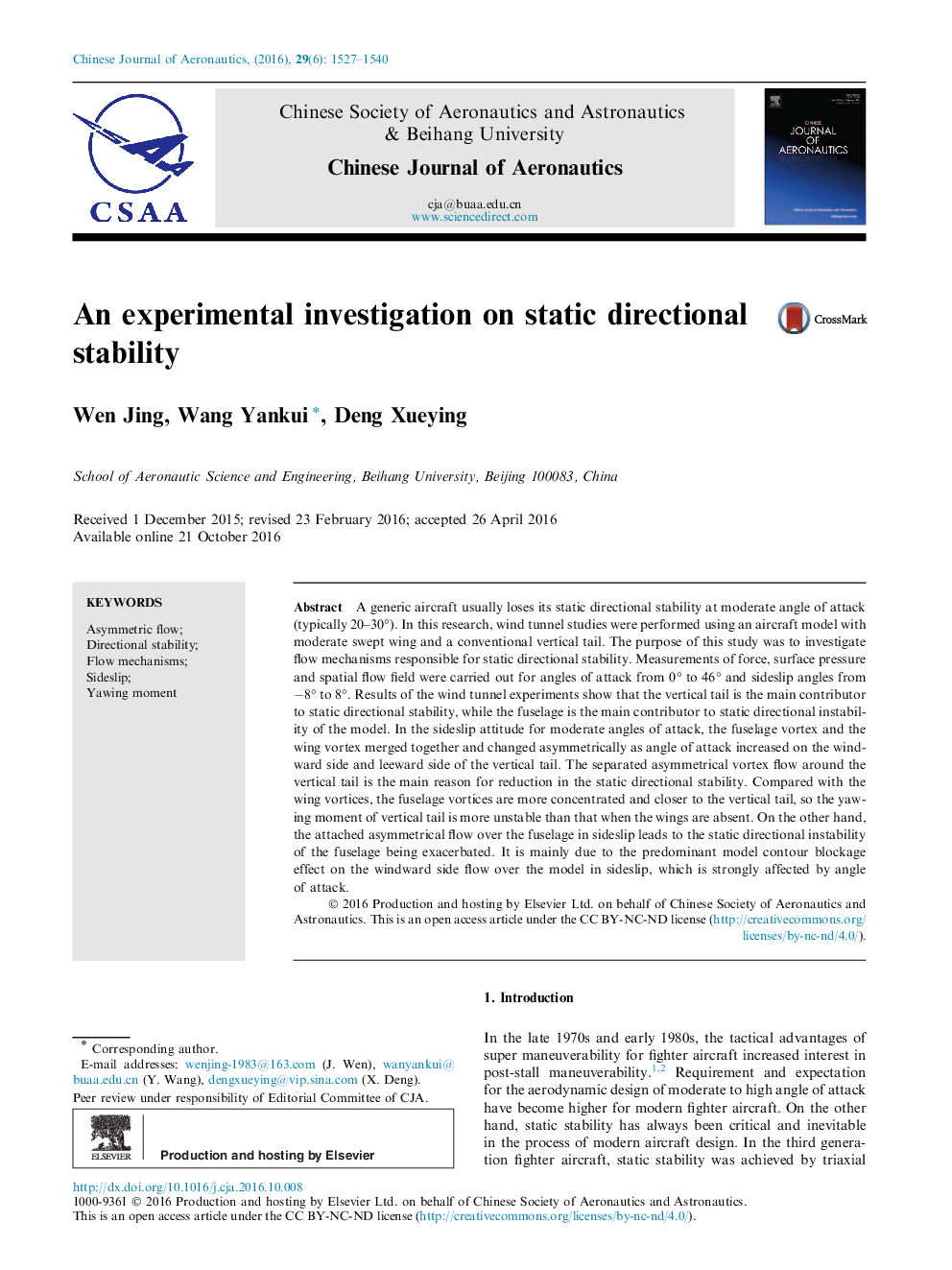| Article ID | Journal | Published Year | Pages | File Type |
|---|---|---|---|---|
| 7154236 | Chinese Journal of Aeronautics | 2016 | 14 Pages |
Abstract
A generic aircraft usually loses its static directional stability at moderate angle of attack (typically 20-30°). In this research, wind tunnel studies were performed using an aircraft model with moderate swept wing and a conventional vertical tail. The purpose of this study was to investigate flow mechanisms responsible for static directional stability. Measurements of force, surface pressure and spatial flow field were carried out for angles of attack from 0° to 46° and sideslip angles from â8° to 8°. Results of the wind tunnel experiments show that the vertical tail is the main contributor to static directional stability, while the fuselage is the main contributor to static directional instability of the model. In the sideslip attitude for moderate angles of attack, the fuselage vortex and the wing vortex merged together and changed asymmetrically as angle of attack increased on the windward side and leeward side of the vertical tail. The separated asymmetrical vortex flow around the vertical tail is the main reason for reduction in the static directional stability. Compared with the wing vortices, the fuselage vortices are more concentrated and closer to the vertical tail, so the yawing moment of vertical tail is more unstable than that when the wings are absent. On the other hand, the attached asymmetrical flow over the fuselage in sideslip leads to the static directional instability of the fuselage being exacerbated. It is mainly due to the predominant model contour blockage effect on the windward side flow over the model in sideslip, which is strongly affected by angle of attack.
Related Topics
Physical Sciences and Engineering
Engineering
Aerospace Engineering
Authors
Jing Wen, Yankui Wang, Xueying Deng,
